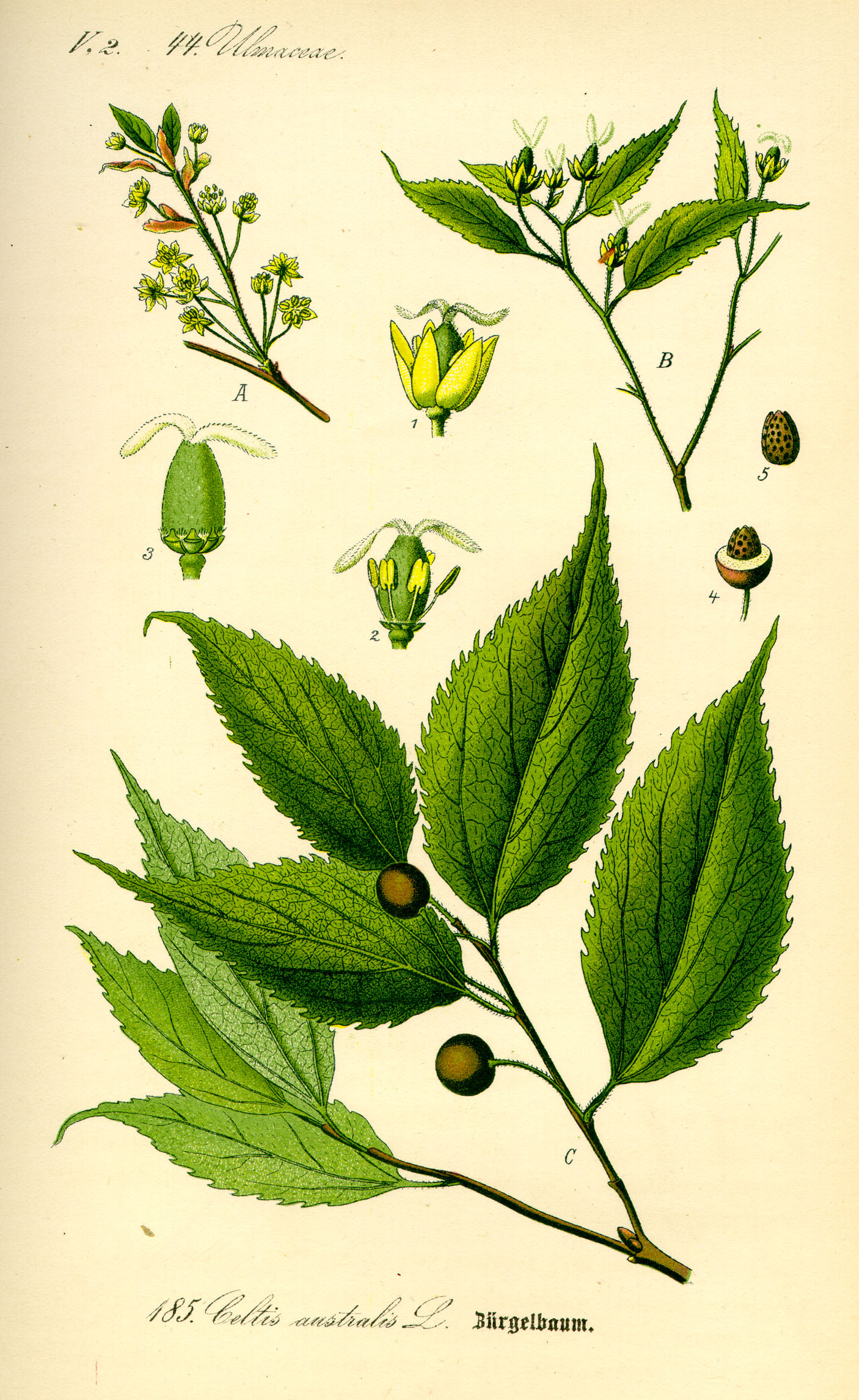- Celtis australis
Taxobox
name = European nettle tree

image_width = 250px
image_caption = "Celtis australis"
regnum =Plant ae
divisio = Magnoliophyta
classis = Magnoliopsida
ordo =Rosales
familia =Cannabaceae
genus = "Celtis"
genus_authority = L.The European nettle tree also known as European Hackberry or Lote tree ("Celtis australis"), is a
deciduous tree that can grow 20 or 25 meters in height.Leaves: Simple, alternate, and sharp-toothed are rough on top, and furry underneath., 5 to 15 cms long and dark grey/green throughout the year fading to a pale yellow before falling in autumn.
Flowers: The flowers are hermaphrodite (have both male and female organs) small and green without petals, either singly or in small clusters. Not effective ornamentally.
Fruit: Small, dark-purple berries (
drupes ), 1 cm wide hang in short clusters and are extremely popular with birds and other wildlife.Bark: Smooth, gray bark develops picturesque corky warts and ridges as it matures.
Habitat
The plant prefers light (sandy) and medium (loamy) soils, requires well-drained soil and can grow in nutritionally poor soil. The plant prefers acid, neutral and basic (alkaline) soils. It cannot grow in the shade. It requires dry or moist soil and can tolerate drought.Habitats and Possible Locations
Uses
It is often planted as an ornamental as it is resistant to air pollution and long-living. The fruit of this tree is are sweet and edible, and can be eaten raw or cooked. The leaves and fruit are astringent, lenitive and stomachic. decoction of both leaves and fruit is used in the treatment of amenorrhoea, heavy menstrual and intermenstrual bleeding and colic. The decoction can also be used to astringe the mucous membranes in the treatment of diarrhoea, dysentery and peptic ulcersA yellow dye is obtained from the barkWood - very tough, pliable, durable. Widely used by turners. The flexible thin shoots are used as walking sticks. An excellent fuel
History
The European Nettle, "Celtis australis", is supposed to have been the Lotus of the ancients, whose fruit
Herodotus ,Dioscorides , andTheophrastus describe as sweet, pleasant, and wholesome.Homer has Ulysses refer to the "Lotus-eaters" and the "lotus" in "Odyssey, Book IX". cite book
last =Keeler
first =Harriet L.
title =Our Native Trees and How to Identify Them
publisher =Charles Scriber's Sons
date =1900
location =New York
pages =249-252 ] The fruit and its effects are described in Tennyson's poem "The Lotos-Eaters".References
Wikimedia Foundation. 2010.
